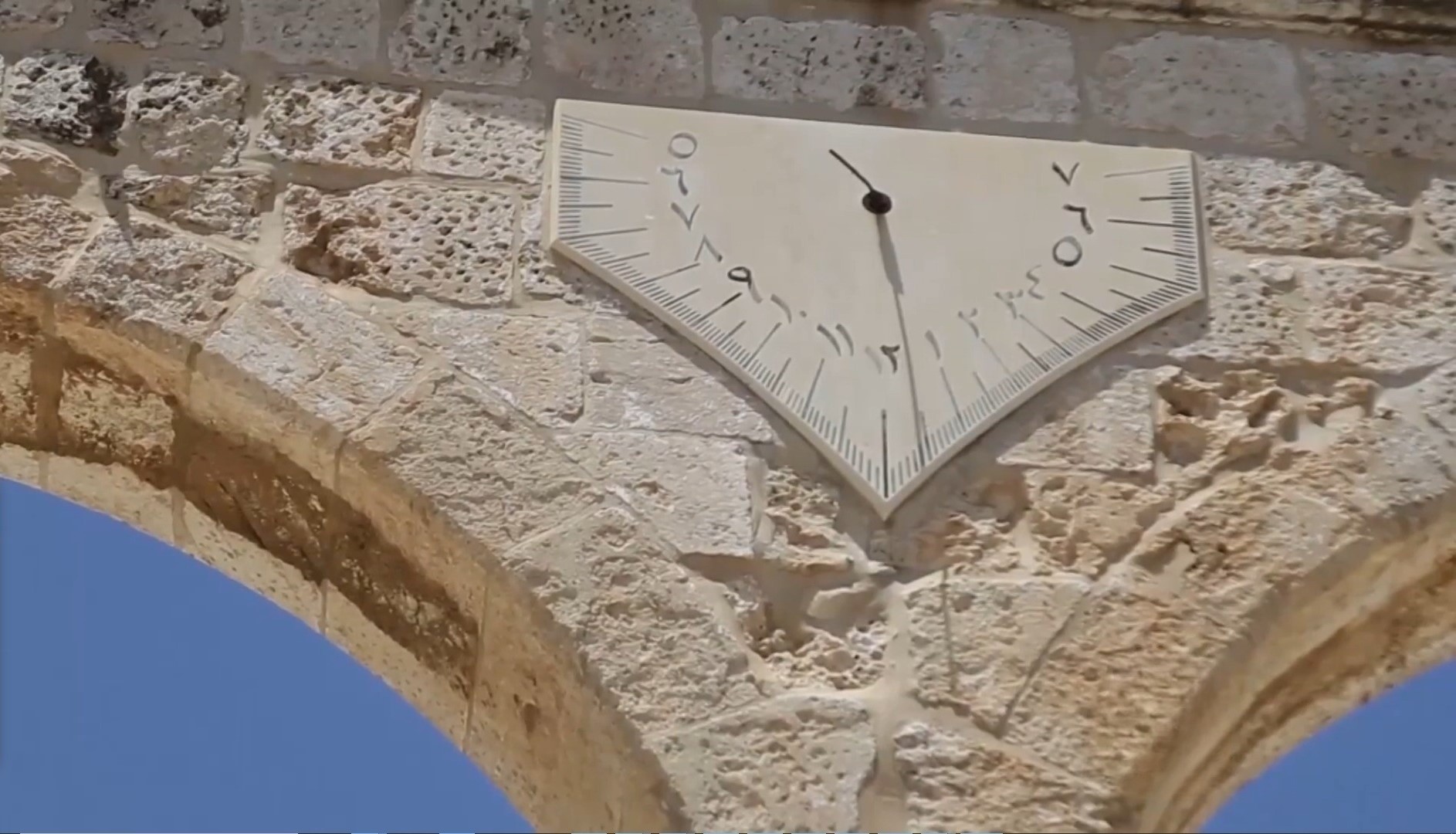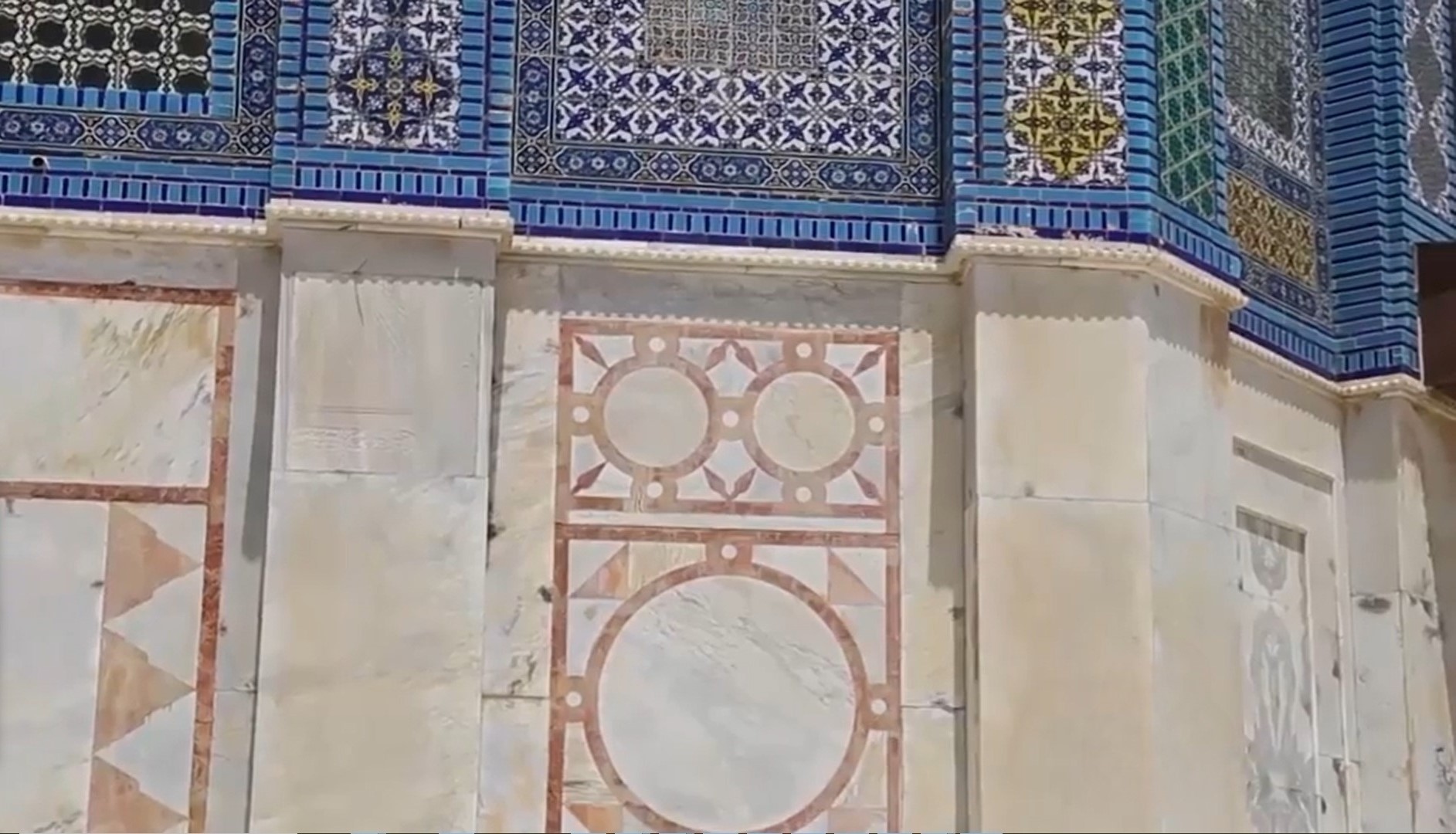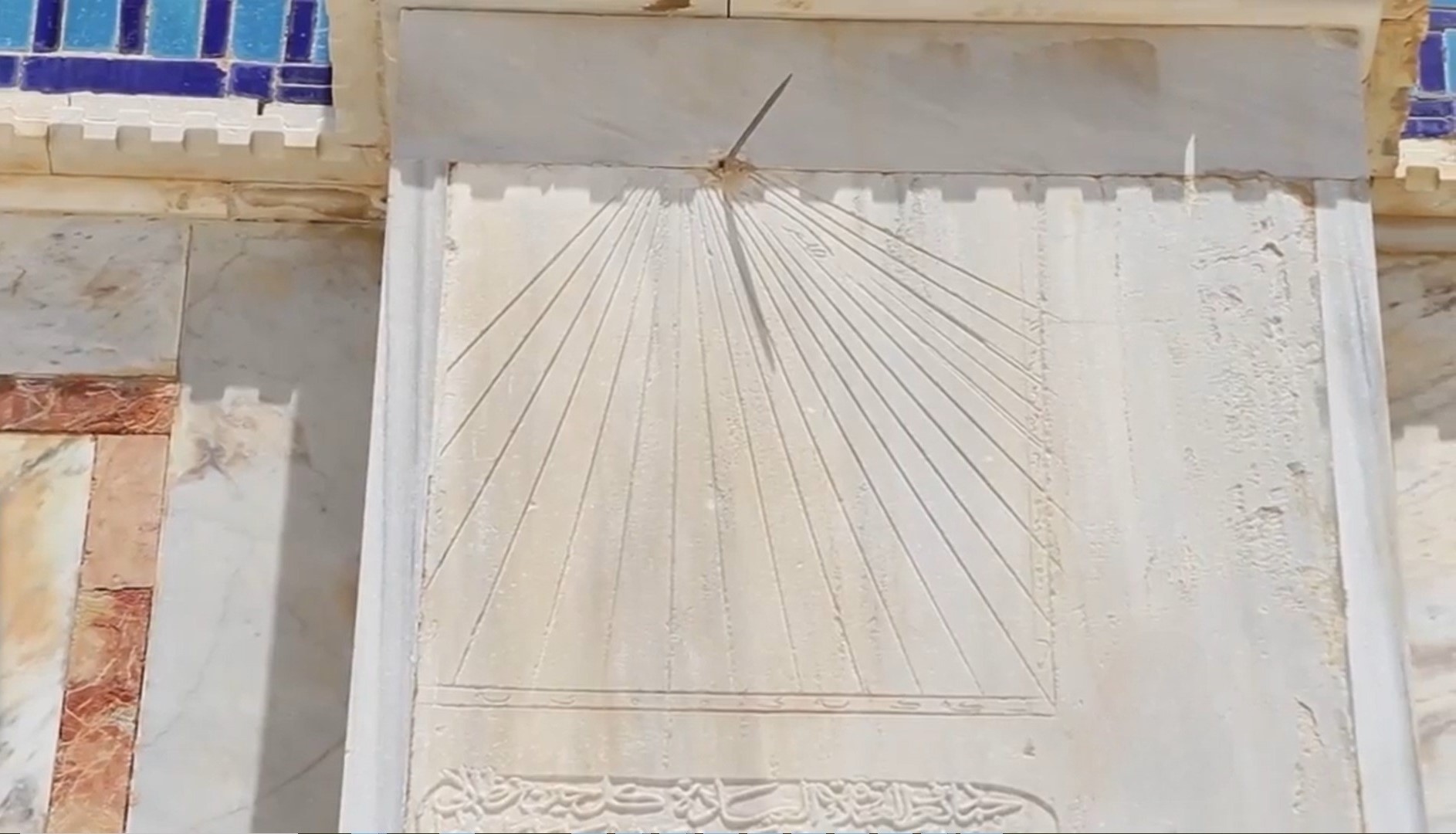Sundials
The sundial above the southern arcade
Perhaps many people do not notice that there is a sundial (a sundial) at the top of the southern arcade of the Dome of the Rock Mosque.. It is the Al-Aqsa Mosque sundial dating back to 1927, according to the only recording circulating on the Internet.
Since that date, this sundial is still present at the top of the southern arcade that ascends from the Al-Qibli Mosque to the Dome of the Rock Mosque, and rises about eight meters from the ground. Five sides of unequal length (100 x 150 cm) with engraved lines representing the hour and its times, in addition to a 25 cm long metal column that represents the main symbol of the sundial.

The honor of building this Al-Aqsa sundial goes back to the engineer Rushdi Al-Imam, a member of the Islamic Supreme Council at the time, as a clock by which time is inferred during the day and used to know prayer times, as modern clocks had not yet spread, Or it was only available in the pockets of the world's wealthy.

On the other hand, and over hundreds of years, sundials spread in all countries of the world, especially on the walls of mosques and churches, in parks and public squares, in different shapes and designs, but their principle was based on one of two types: the horizontal sundial and the vertical sundial. The horizontal ones are placed on the ground so that people can see them from above, and they consist of a triangle facing north towards the North Star at an angle equal to the latitude of the site for which it was made. As for the perpendicular, it is just a nail or a metal rod fixed in the wall facing the sun in the south, and also heading towards the North Star so that its shadow falls on a circle drawn on the wall and divided into angles, each of which indicates an hour of the day.
A sundial on the wall of the Dome of the Rock


